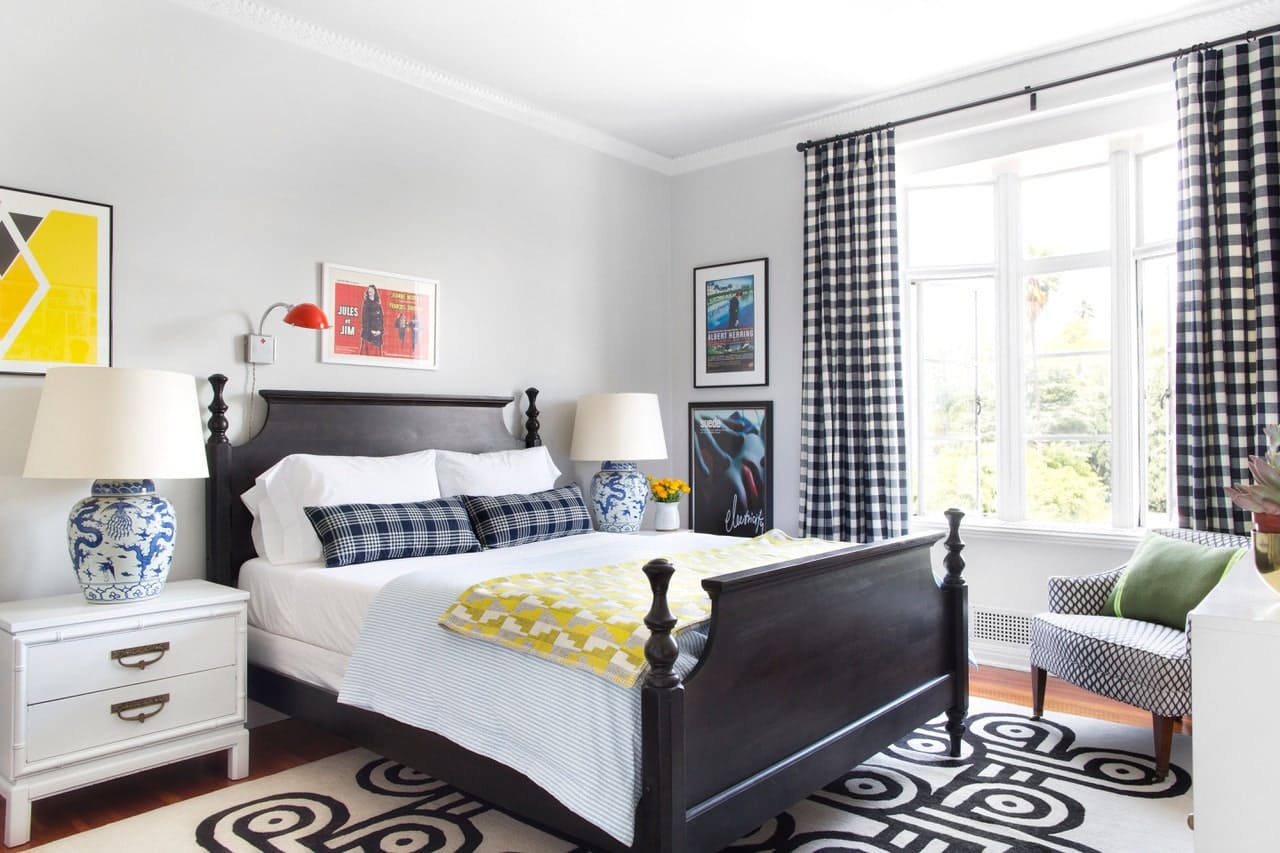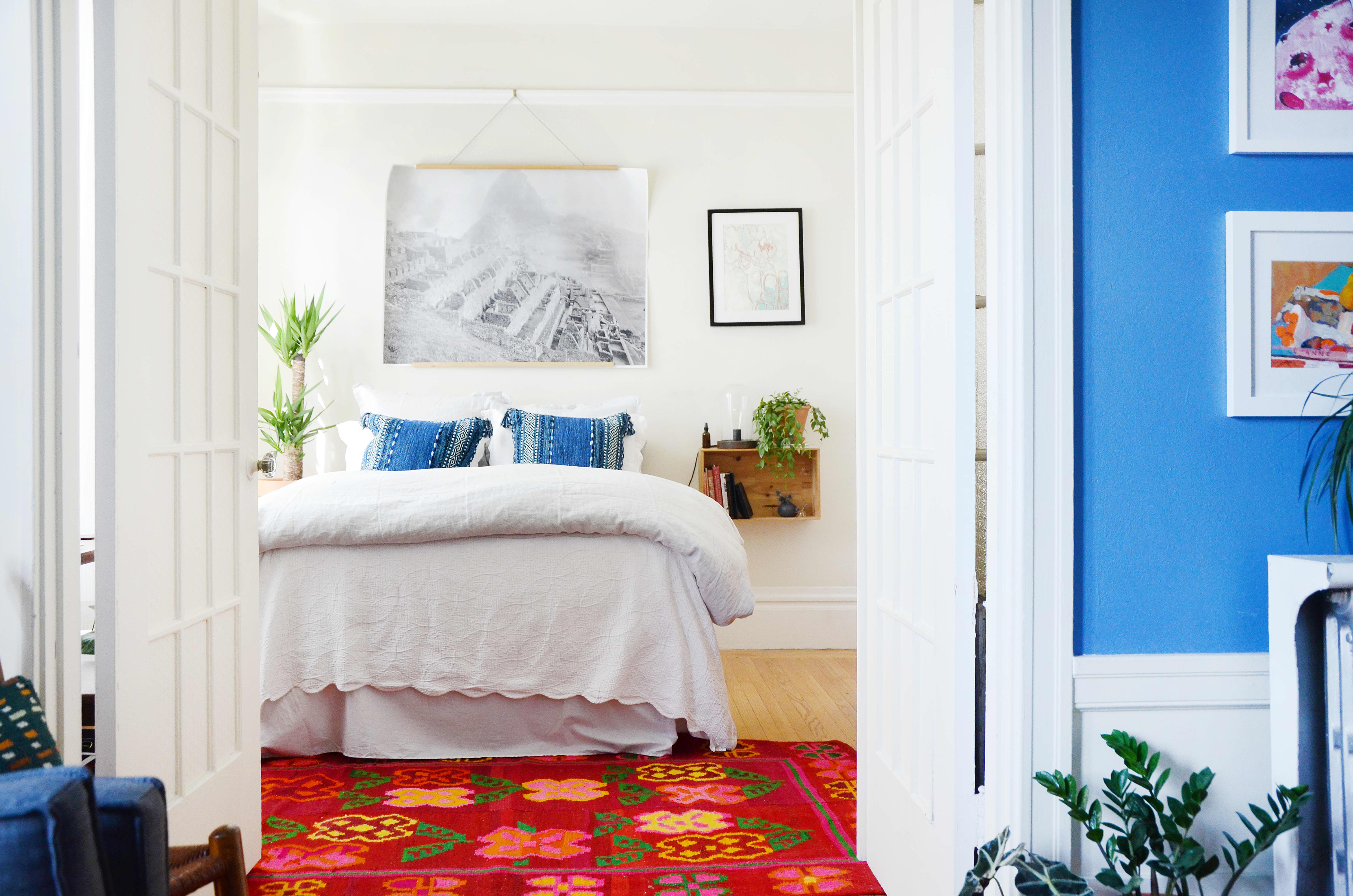Understanding Space Optimization: Bed Placement In Small Bedroom

In a small bedroom, every inch of space counts. Maximizing space is crucial for creating a comfortable and functional living environment. It’s about making the most of what you have and creating a sense of spaciousness, even in a limited area.
Maximizing Vertical Space
Vertical space is often overlooked in small bedrooms. Utilizing this space effectively can significantly increase storage capacity and reduce clutter.
“Going up is the key to maximizing space in small bedrooms.”
This involves utilizing the area above eye level, such as installing shelves, using tall storage cabinets, or even hanging clothing from the ceiling.
Multi-Functional Furniture, Bed placement in small bedroom
Multi-functional furniture is a game-changer in small bedrooms. These pieces serve multiple purposes, maximizing space and minimizing the need for separate items.
“Less furniture, more function.”
Examples include:
- A bed with built-in storage drawers or a headboard with shelves.
- A sofa bed that transforms into a sleeping area.
- A desk that folds away when not in use.
Space-Saving Storage Solutions
Clever storage solutions are essential for keeping a small bedroom organized. These solutions help to maximize storage capacity while minimizing visual clutter.
“Storage is key to a clutter-free small bedroom.”
Here are some examples:
- Under-bed storage containers for seasonal items or bedding.
- Wall-mounted shelves for books, decor, or small items.
- Over-the-door organizers for shoes, accessories, or cleaning supplies.
- Stackable drawers or baskets for organizing clothing or linens.
Strategic Bed Placement

In a small bedroom, strategic bed placement is paramount to maximizing space and creating a sense of balance. By carefully considering bed size and placement, you can transform your bedroom into a haven of comfort and functionality.
Choosing the Right Bed Size
Selecting the appropriate bed size is crucial for small bedrooms. Opting for a bed that’s too large can make the space feel cramped and overwhelming, while a bed that’s too small might not provide adequate comfort. The ideal bed size should leave ample room for movement and allow for sufficient walking space around the bed.
- Twin Bed: Suitable for single occupants or small bedrooms, offering a compact footprint and maximizing floor space.
- Full Bed: A popular choice for individuals or couples, providing more sleeping space than a twin bed while remaining relatively compact.
- Queen Bed: Offers generous sleeping space for couples, but may be too large for very small bedrooms.
- King Bed: Typically reserved for larger bedrooms, providing ample sleeping space and a luxurious feel.
Advantages and Disadvantages of Placing the Bed Against a Wall
Placing the bed against a wall is a common practice in small bedrooms, as it maximizes floor space and creates a sense of enclosure. However, it’s important to weigh the advantages and disadvantages before making a decision.
- Advantages:
- Maximizes Floor Space: Placing the bed against a wall frees up valuable floor space, making the room feel larger.
- Creates a Sense of Enclosure: The wall behind the bed can provide a sense of security and privacy.
- Simplifies Bedside Table Placement: Placing the bed against a wall simplifies bedside table placement, as they can be placed directly on either side of the bed.
- Disadvantages:
- Limited Access: Placing the bed against a wall can limit access from both sides, making it difficult to make the bed or get in and out.
- Potential for Clutter: The wall behind the bed can easily become cluttered with items like books, lamps, or other personal belongings.
- Limited Lighting: Placing the bed against a wall can block natural light, making the room feel dark and gloomy.
Positioning the Bed for Maximum Natural Light
Incorporating natural light into a small bedroom is essential for creating a bright and airy atmosphere. Positioning the bed to maximize natural light can transform the room into a tranquil oasis.
- Place the Bed Near a Window: Placing the bed near a window allows natural light to flood the room, creating a sense of spaciousness and warmth.
- Utilize Mirrors: Mirrors strategically placed opposite windows can reflect natural light, further brightening the room.
- Choose Light-Colored Bedding: Light-colored bedding reflects light, making the room appear larger and brighter.
Bed Placement Options in a Small Bedroom
Here is a table comparing the pros and cons of different bed placement options in a small bedroom:
| Placement Option | Pros | Cons | Best for |
|---|---|---|---|
| Against a Wall | Maximizes floor space, creates a sense of enclosure, simplifies bedside table placement | Limited access, potential for clutter, limited lighting | Small bedrooms with limited space, single occupants |
| In the Corner | Maximizes floor space, creates a sense of privacy, can accommodate a larger bed | Limited access from one side, can feel cramped | Small bedrooms with a corner space, couples |
| Freestanding | Provides easy access from all sides, allows for more flexible furniture arrangement | May take up more floor space, can feel less enclosed | Larger bedrooms with ample space, couples with a lot of belongings |
| Platform Bed | Creates a sense of loftiness, can be used for storage, adds visual interest | May be more expensive, requires careful placement to avoid blocking natural light | Small bedrooms with limited storage space, individuals who want a modern look |
Maximizing Functionality

A small bedroom can still be a haven of comfort and functionality. By carefully planning your layout and incorporating smart storage solutions, you can maximize every inch of space while maintaining a sense of spaciousness.
Creating a Clear Pathway
A clear pathway around the bed is crucial for easy movement and accessibility. It prevents a cluttered feel and ensures a sense of spaciousness.
- Leave at least 2 feet of space on each side of the bed to ensure easy access and movement.
- Consider the placement of other furniture, such as dressers or nightstands, to ensure a clear path around the bed.
- If you have limited space, consider a platform bed with built-in storage to eliminate the need for a bulky nightstand.
Utilizing Space Under the Bed
The space under the bed is a valuable storage area that can be used to store seasonal items, clothing, or other belongings.
- Invest in storage containers that fit snugly under the bed. These can be plastic bins, fabric boxes, or even rolling drawers.
- Utilize bed frames with built-in storage drawers for easy access to items.
- Consider using bed risers to create additional storage space under the bed.
Incorporating a Desk or Reading Nook
A small bedroom can still accommodate a desk or a reading nook for working or relaxing.
- Place a desk against a wall to maximize floor space.
- Consider a Murphy bed that folds away to create space for a desk during the day.
- Create a cozy reading nook by placing a comfortable chair in a corner of the room and adding a small bookshelf or floor lamp.
Arranging Furniture for Functionality
Arranging furniture in a small bedroom requires careful planning to ensure functionality and comfort.
- Start by placing the bed in the center of the room, leaving enough space for movement around it.
- Place taller furniture, such as a dresser or wardrobe, against a wall to avoid blocking natural light or making the room feel cramped.
- Consider using a mirror to create an illusion of more space and reflect light.
- Use multi-functional furniture, such as a bed with built-in storage or a desk that doubles as a vanity.
- Minimize clutter by keeping only essential items on display.
Bed placement in small bedroom – Okay, so you’re trying to maximize space in a small bedroom, right? Well, bed placement is key. You want to avoid blocking walkways and make sure you can easily access your closet. And if you’re looking for some inspiration on color schemes, check out pictures of dark blue bedrooms – they can make a room feel more intimate and cozy.
Just remember, even with a dark color, a well-placed bed can make all the difference in a small space.
In a small bedroom, bed placement is crucial for maximizing space. You want to create a sense of openness and avoid a cramped feeling. A great color combination to achieve this is a calming blue and gray bedroom , which can visually expand the room.
If you’re short on space, consider pushing the bed against a wall to free up floor area, or even a floating bed to maximize the room’s footprint.
